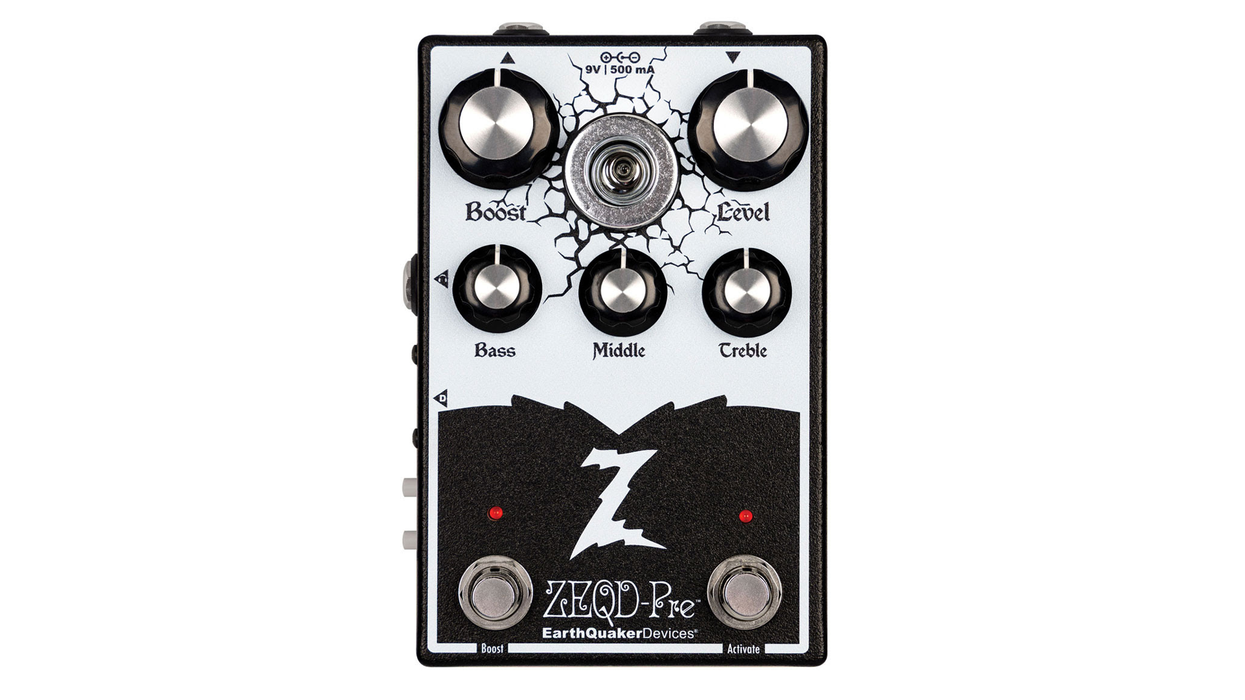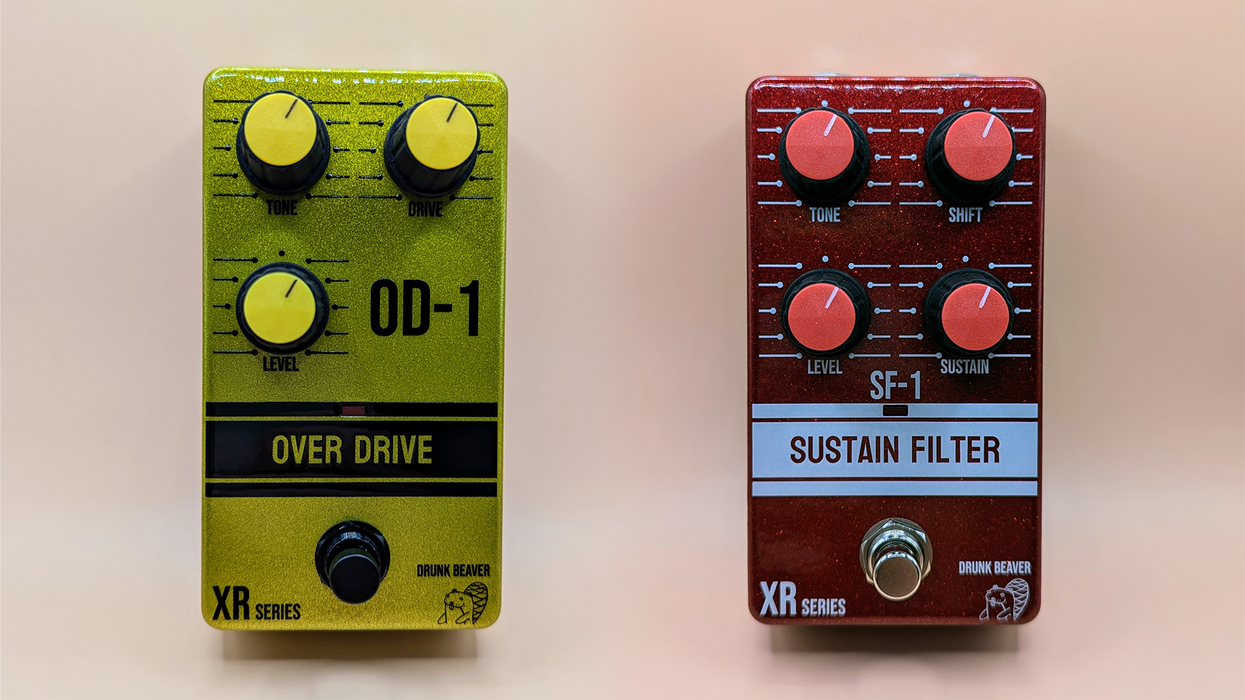Clip 1 - Fender American Standard Jazz: Both pickups full with J’s tone knob at 75 percent. Slight bass and treble boost, and slight mid cut.
Clip 2 - Nash P-style: Instrument tone knob at 60 percent. Session 77 bass knob at noon, mid and treble knobs slightly boosted.
The “mad scientist” moniker is too-often used when describing sound engineers, audiophiles, and gear designers, but it’s an appropriate one for designer Phil Jones. For decades he has focused his attention on helping bassists deliver clean, responsive sounds via large clusters of small drivers. And, in turn, the tone-obsessed have invested plenty of their gig money in Phil Jones Bass products over the years. Jones has now set his sights on budget-conscious bassists with the release of the Session 77. It’s the company’s sharp-looking 100-watt combo that houses two proprietary 7" drivers and weighs in at a couple clicks less than 30 pounds.
What’s in the Box?
According to Jones, the company didn’t skimp on the quality of parts for the Session 77. He simply reduced the features to the basic needs of players. Yet, despite the cost-cutting streamlining, the amp has plenty to offer.
Next to the input is a 3-position switch that mutes the signal or sets the sensitivity for active or passive pickups. Once the gain stage is set with the input-level control, a 3-band EQ section provides basic tonal adjustments. To round out the topside panel, a 1/8" auxiliary input with a corresponding level control is positioned to the right of the master volume, along with a headphone jack and a line out to expand the flexibility of the amp.
Inside the Session 77 resides the pair of PJB ferrite speakers and a Jones-designed 2" tweeter to deliver the upper portions of the frequency spectrum. All of the components add up to a svelte, 28-pound package that’s similar in size to a large tackle box.

Clean and Cranked
Clean aesthetics are prevalent on the Session 77. The smooth contours and tight-patterned steel grille convey a boutique feel. It travels well thanks to a balanced design and stout handle. Jones also thoughtfully installed two handlebars on the amp section, which make for easy removal of the electronics if needed and act as roll bars for protection during a tumble.
I was pleased with the simplicity of the Session 77’s controls. When I pulled out a Fender American Standard Jazz to experiment with the EQ section, I found in no time that it—like the EQ on other PJB offerings I’ve spent time with—is voiced in a way that enhances the inherent tone of the instrument. Increasing the bass control didn’t add punch, but instead contributed thickness and heft to bass notes. Boosting the mid control accentuated the upper mids, which conveyed a clanging presence to the J’s timbre. (I preferred a slight cut of this dial, which took some honk out of the tone.) My sound was given air and sparkle when I increased the treble, inviting harmonics to pop and shine.
Ratings
Pros:
Responsive, clean tone in a tiny package.
Cons:
Underpowered for a number of performance applications. No onboard DI.
Tones:
Ease of Use:
Build/Design:
Value:
Street:
$399
Phil Jones Bass Session 77
pjbworld.com
So, does the Session 77 have enough power? While 100 watts is huge for our guitar-playing friends, it can be considerably limiting in the bass arena—often relegating such an amp to practice-only status. When I took the Session 77 to a rehearsal with an acoustic duo, the combo nicely projected the woody timbres of my German upright outfitted with a Fishman Full Circle pickup. As I pushed the volume, however, the massive low-end of the upright at times seemed to force the speakers to work uncomfortably hard. This was a moot concern once I transitioned to a Nash P-style bass. Cranking the master volume to the maximum with it delivered a full, punchy tone for the duration of the three-hour practice. I found myself thinking that an onboard DI would have been nice for larger live applications, but, when needed, the line out can be used to connect a DI box or a powered speaker to expand the amp’s versatility.
The biggest strength of the Session 77 lies in its ability to reveal the character of each instrument with impressive detail. Whether it was the midrange growl of the Nash P-style bass, the tonal combinations of a Jazz bass, or the complex characteristics of an upright, the amp transmitted the tonal spectrum with a quick response and transparency.
The Verdict
The Session 77 delivers the essentials of Phil Jones amplification at a price point significantly lower than many of the company’s other products. This also places it in a class with other bass combos that have more power and, arguably, more versatility. However, the Session 77 has the all-important ability to effectively convey the characteristics of your instrument—something not all its competition in this price range can boast. Beyond being a super cool practice rig, the Session 77 is a solid option for small-stage applications. And it’s priced right for players who have been “Jonesing” for a PJB amp but couldn’t manage the entry fee of the company’s other offerings. If you’re serious about preserving the sound of your instrument through a light and tight combo, you don’t need to look much further than the Session 77.







![Rig Rundown: John 5 [2026]](https://www.premierguitar.com/media-library/youtube.jpg?id=62681883&width=1245&height=700&quality=70&coordinates=0%2C45%2C0%2C45)
![Rig Rundown: AFI [2025]](https://www.premierguitar.com/media-library/youtube.jpg?id=62064741&width=1245&height=700&quality=70&coordinates=0%2C0%2C0%2C0)












 Shop Scott's Rig
Shop Scott's Rig















































